Decoding Customer Retention: Metrics and Winning Tactics
Learn what customer retention is, its metrics, and how businesses can create opportunities to improve customer retention and encourage repeat...
Customer retention increases CTV and boosts a brand's revenue. Read this blog to learn how to improve Customer Retention for DTC Brands.
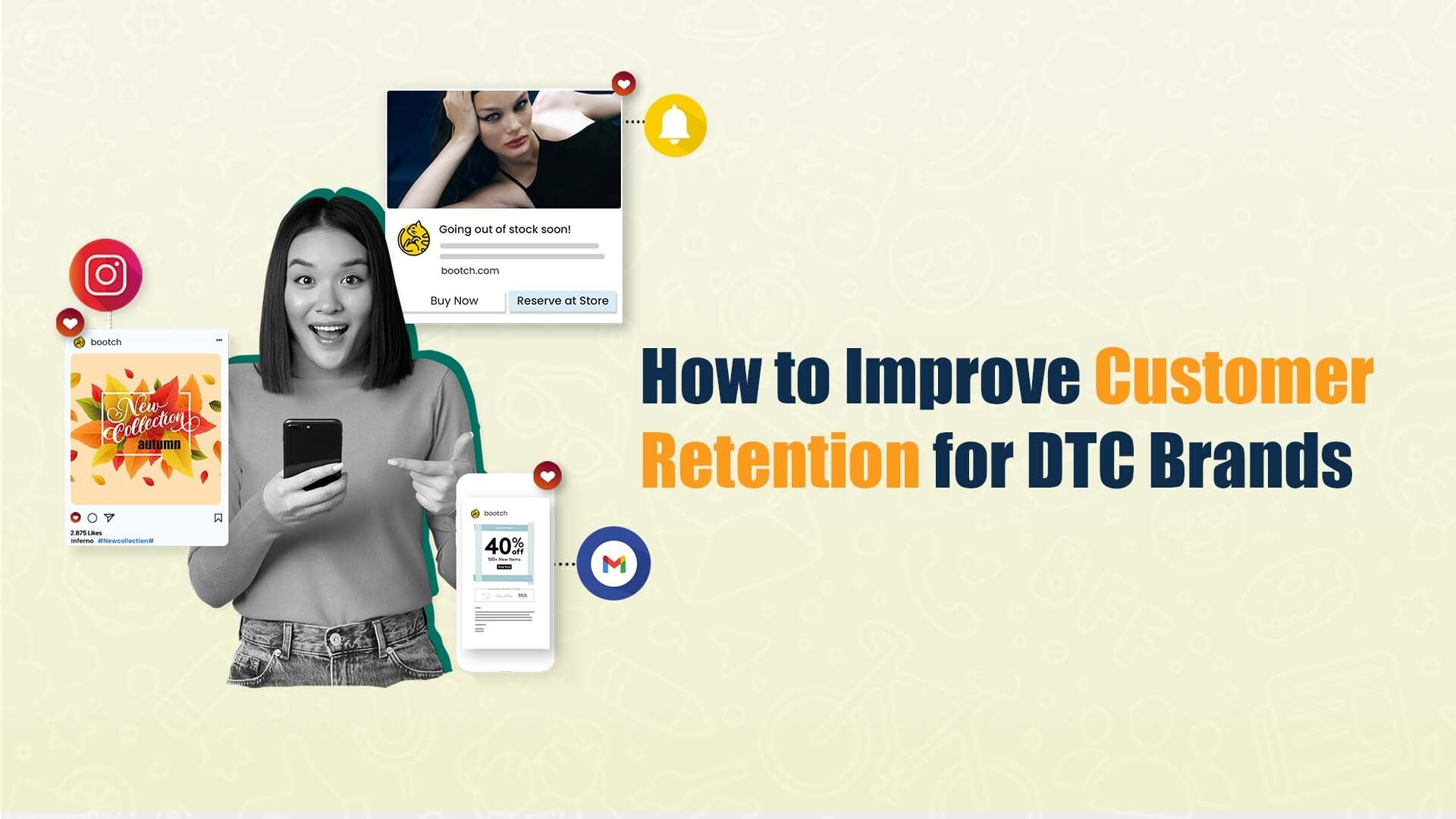
In the long run, as an online retailer, you have two ways to go about it. Either you utilize eCommerce platforms such as Amazon, eBay, and others to sell, or you sell directly. The latter brands are known as Direct-to-customer brands, where the customer purchases from the brand itself online.
Due to the cutthroat competition, it is important for DTC brands to create long-lasting relations with their customers. And this is where a solid customer retention strategy could differentiate you from various eCommerce marketplaces as well as your competitors.
Today we will look into DTC customer retention, and loyalty and how they could be a huge contributor to the success of DTC brands in the long run.
The benefits of customer retention could bolster your business in these ways:
In fact, according to a report, if a DTC brand can target a 28% customer retention rate, it could improve its revenue by 60%.
So how can your direct-to-consumer marketing help you reach the desired 28% retention rate? In this blog, we look at the best practices for DTC brands to improve customer retention.
Before we begin, let’s first look at the key retention metrics for DTC brands.
There are 5 key metrics that marketers should monitor to gauge the performance of their retention efforts.
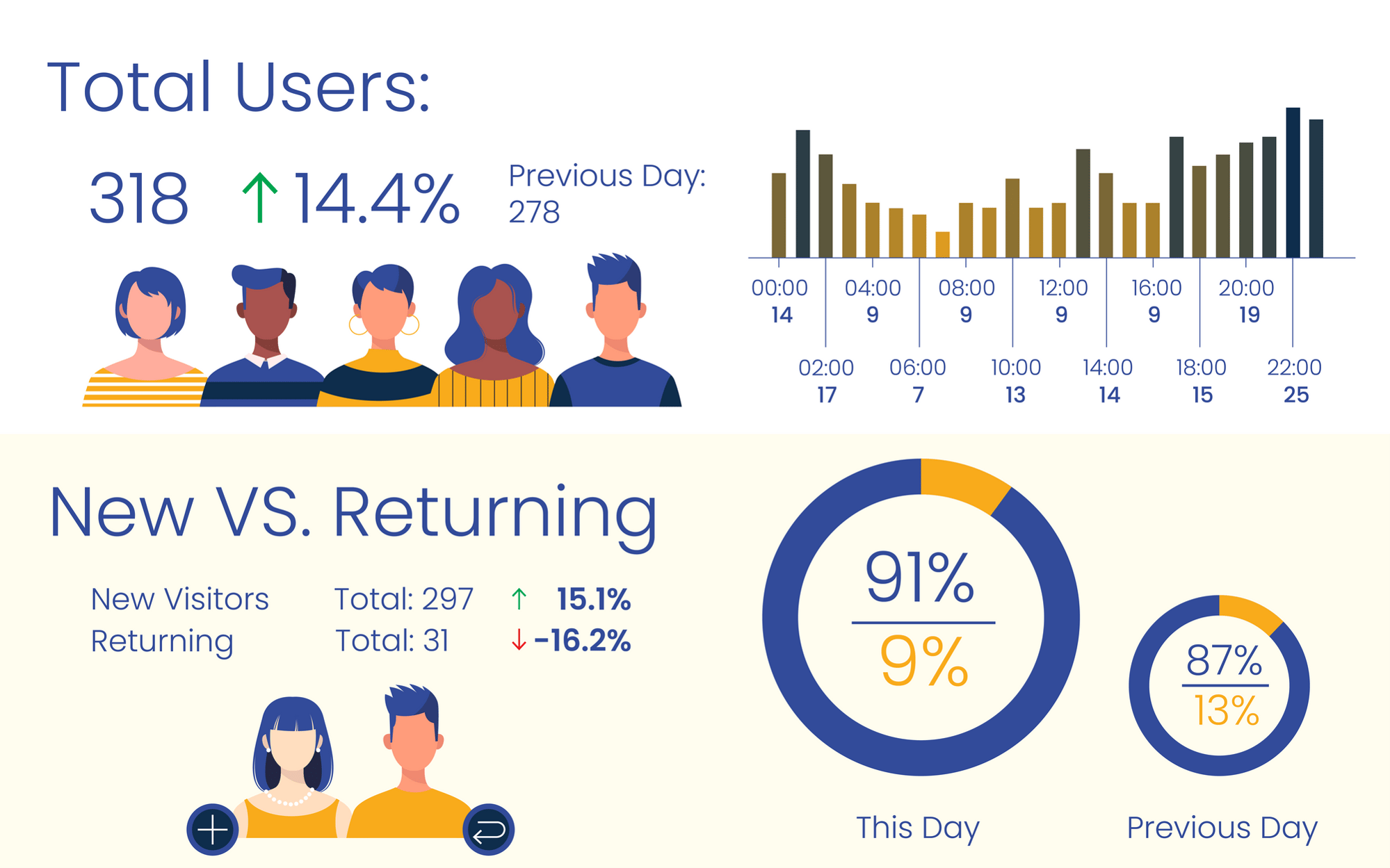
The first retention metric to monitor would be the new vs. returning customers rate. A healthy amount of returning customers could help you jumpstart your customer retention program. On the other hand, if most of your revenue is still generated with new customers, you should incorporate techniques that would bring back your existing customers.
If you have around 50% returning customers, you can divert a significant portion of your budget into acquiring new customers. At the same time, if this figure is below 25%, then you’re missing out on additional revenue and should actively target one-time customers to incentivize returns.
In fact, Alex Schultz, VP of Growth at Facebook, says, “If you can get 20-30% of customers coming every month and making a purchase from your store, you should do pretty well”.
Average order value (AOV) is the average amount customers spend when they purchase from your store. This metric can help retailers understand customer purchase behavior.
The metric can clarify your marketing and customer success teams in terms of the most popular products in your store and what products are not making the cut. By identifying these products you can reevaluate your retention tactics and push the best-performing products to your customers instead of detracting products.
How to calculate average order value:
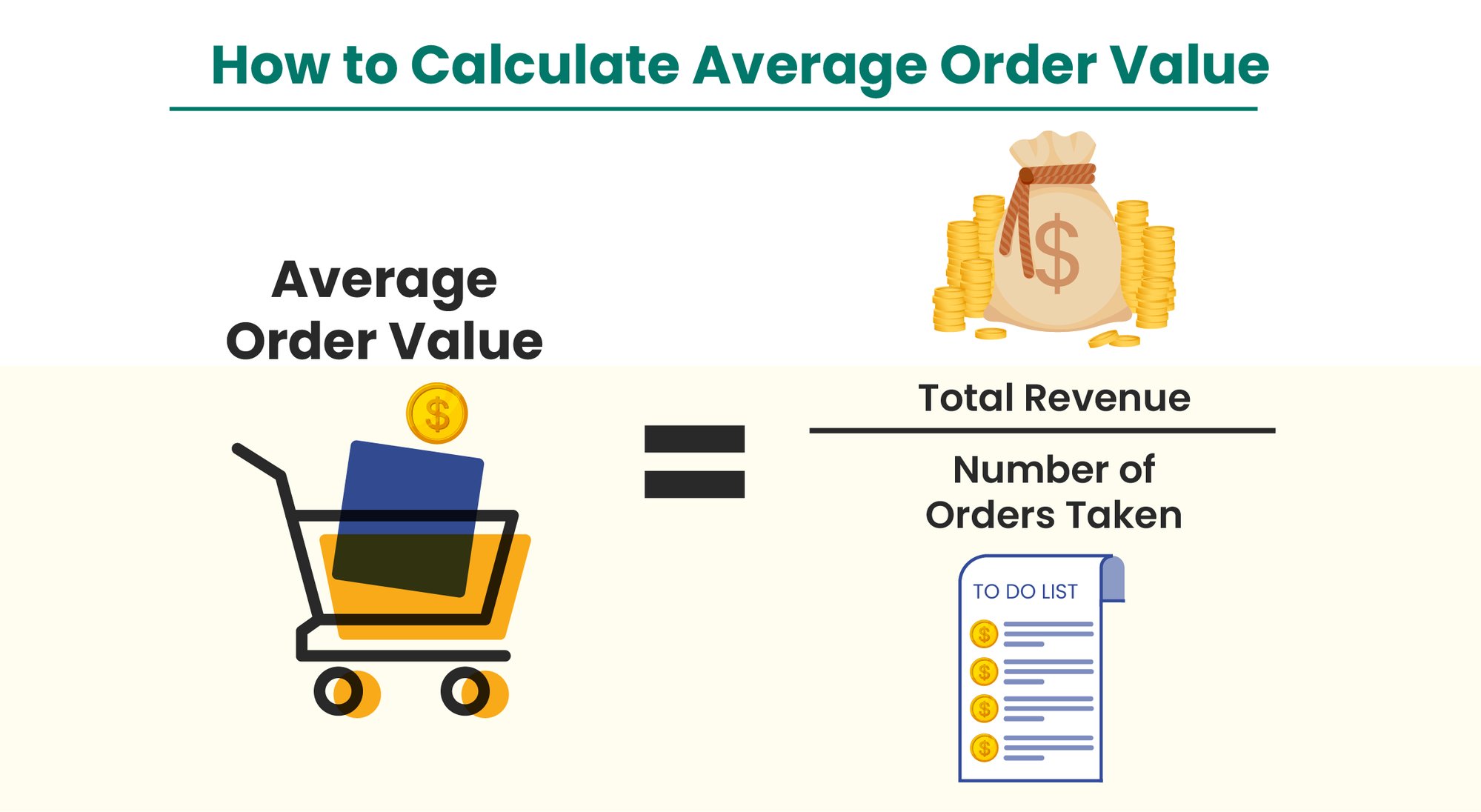
Total Revenue / Orders Placed = Average Order Value
The average order value is calculated by dividing the total revenue by the number of orders placed.
The Repeat purchase rate clues the measurement of the total number of customers that return to buy from your DTC brand again after making their initial or previous purchase.
Once you have a clear understanding of your repeat purchase rate, you will be able to gauge the health of your customer base and whether or not your marketing efforts are effective enough to encourage customer loyalty.
For different DTC brands, repeat purchases could have different purchase timelines. For example, a clothing DTC brand might be looking into a repeat purchase once per quarter as the qualifying metric.
Simultaneously, a DTC brand selling food and other perishable items might be looking into weekly repeat orders as their timeline.
So here’s how you can calculate your repeat purchase rate.
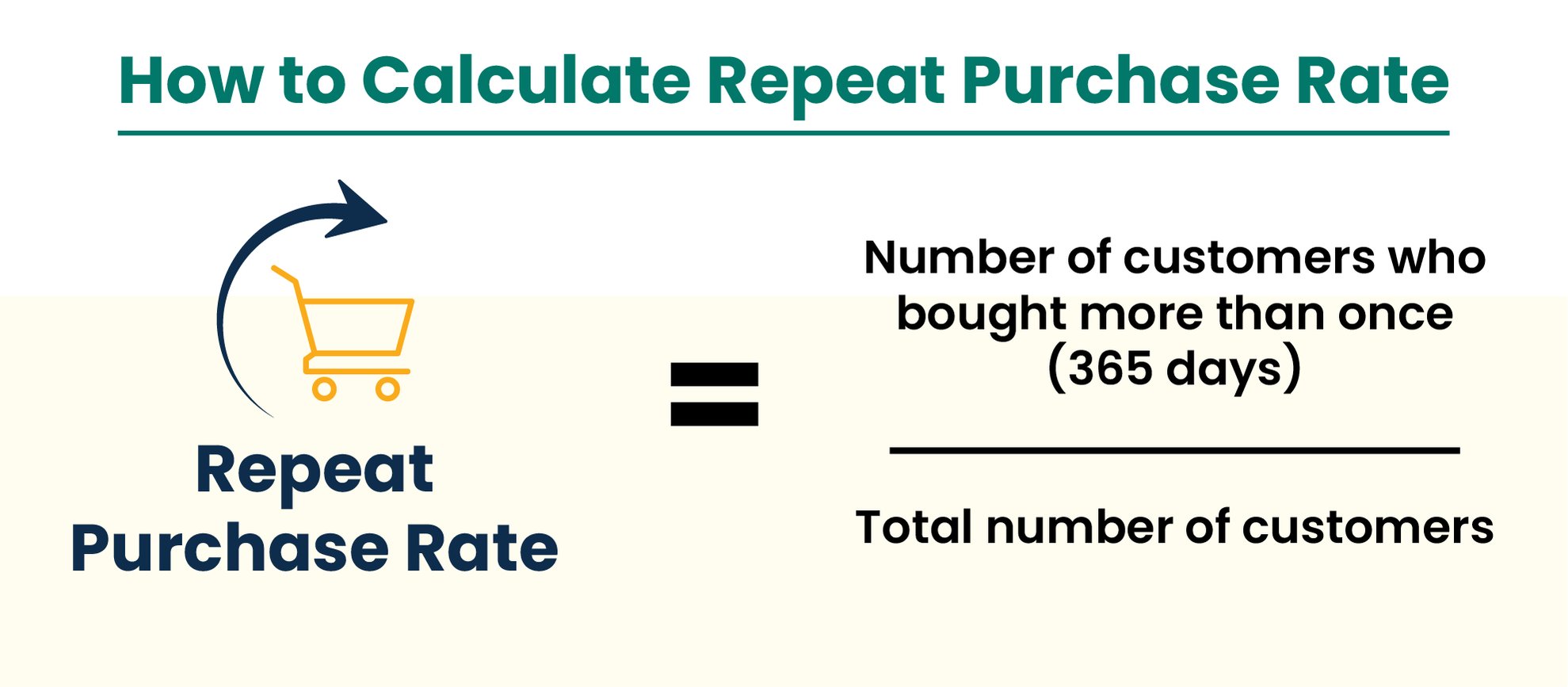
The number of customers who bought more than once (in a given timeline)/total number of customers = Repeat purchase rate.
Customer lifecycle value is the average revenue you can generate from customers over the lifetime of their shopping account. The amount of money you can generate from a customer before they don’t return or become dormant in simpler terms.
In DTC retail, if, on average, your customers make 5 purchases over a period of 6 months and leave, your CLTV would be the amount generated by these 5 purchases, and the customer’s lifetime would be 6 months.
CLTV or CLV is an important metric because it provides you with a customer-centric perspective to induce customer loyalty. It helps you align your marketing and sales efforts to improve your CLV, which is a good indicator of customer retention.
In the ideal scenario, if your CLV 3-times higher than CAC, then you’re already good at customer retention and encouraging repeat purchases.
CLV > 3X CAC
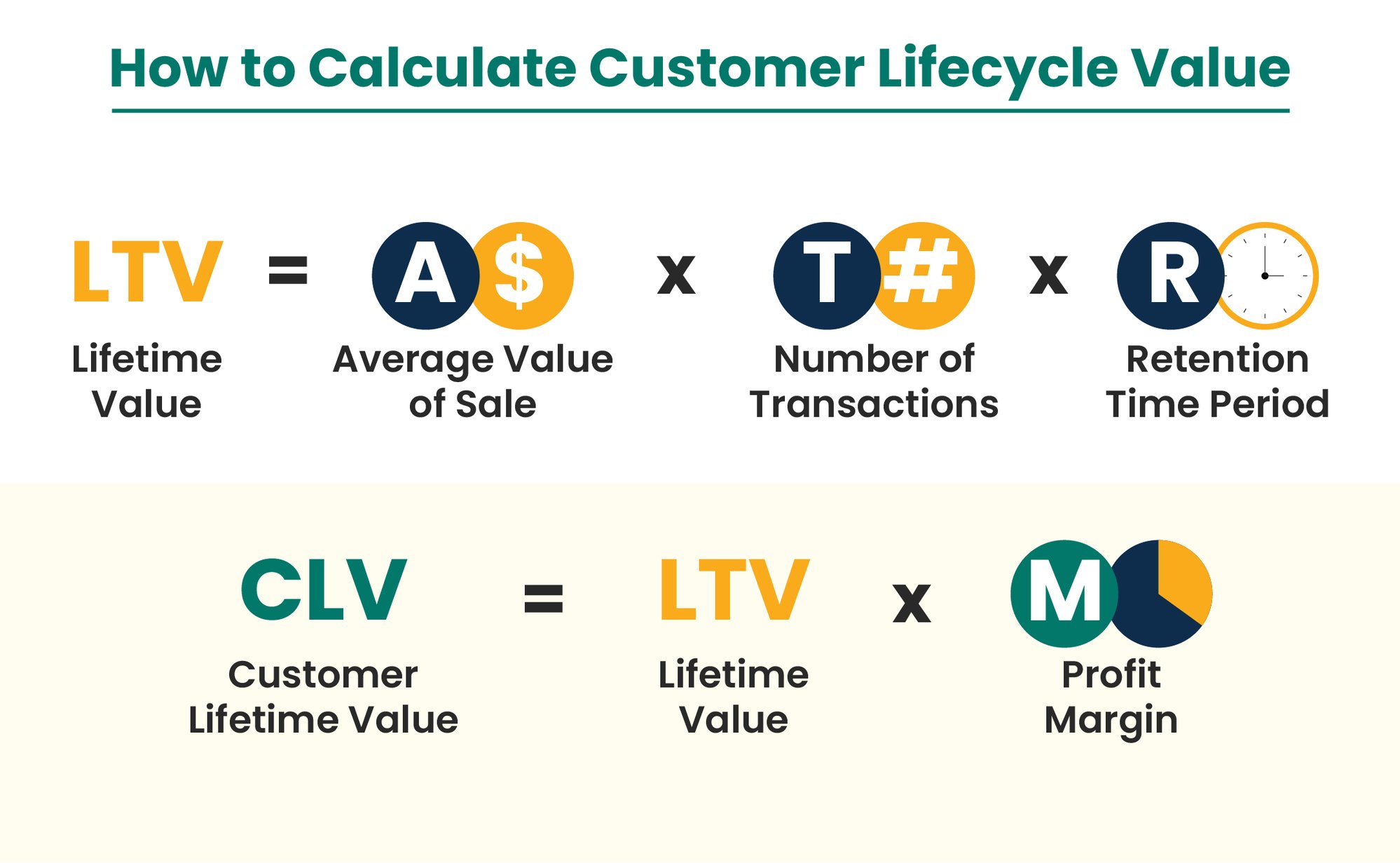
The net promoter score (NPS) is a customer loyalty metric used by marketers to measure the number of satisfied customers and the average degree of satisfaction. It’s a survey indexed between 0-100 with surveys in a range of 0-10 — On a scale of 0-10, how likely are you to recommend [Your brand] to a friend or colleague?
The score classifies customers as –

You can calculate your net promoter score by:
(Number of Promoters – Number of Detractors) / Total Respondents x 100 = Net Promoter Score
As we discussed, a high number of promoters could be extremely beneficial for your DTC brand. As per research, a high net promoter score can account for 20-60% growth for your brand.
Now that we have covered the important retention metrics let’s look at some best practices for customer retention in the DTC retail space.
Let’s look at the best practices leading DTC brands to utilize to bring back their customers and encourage repeat purchases.
As we discussed above, it all starts with measuring your efforts and the data you collect. Before jumping straight into retention, we need first to understand how deep in the water you are?
Here are some common questions you should answer by measuring your current efforts —
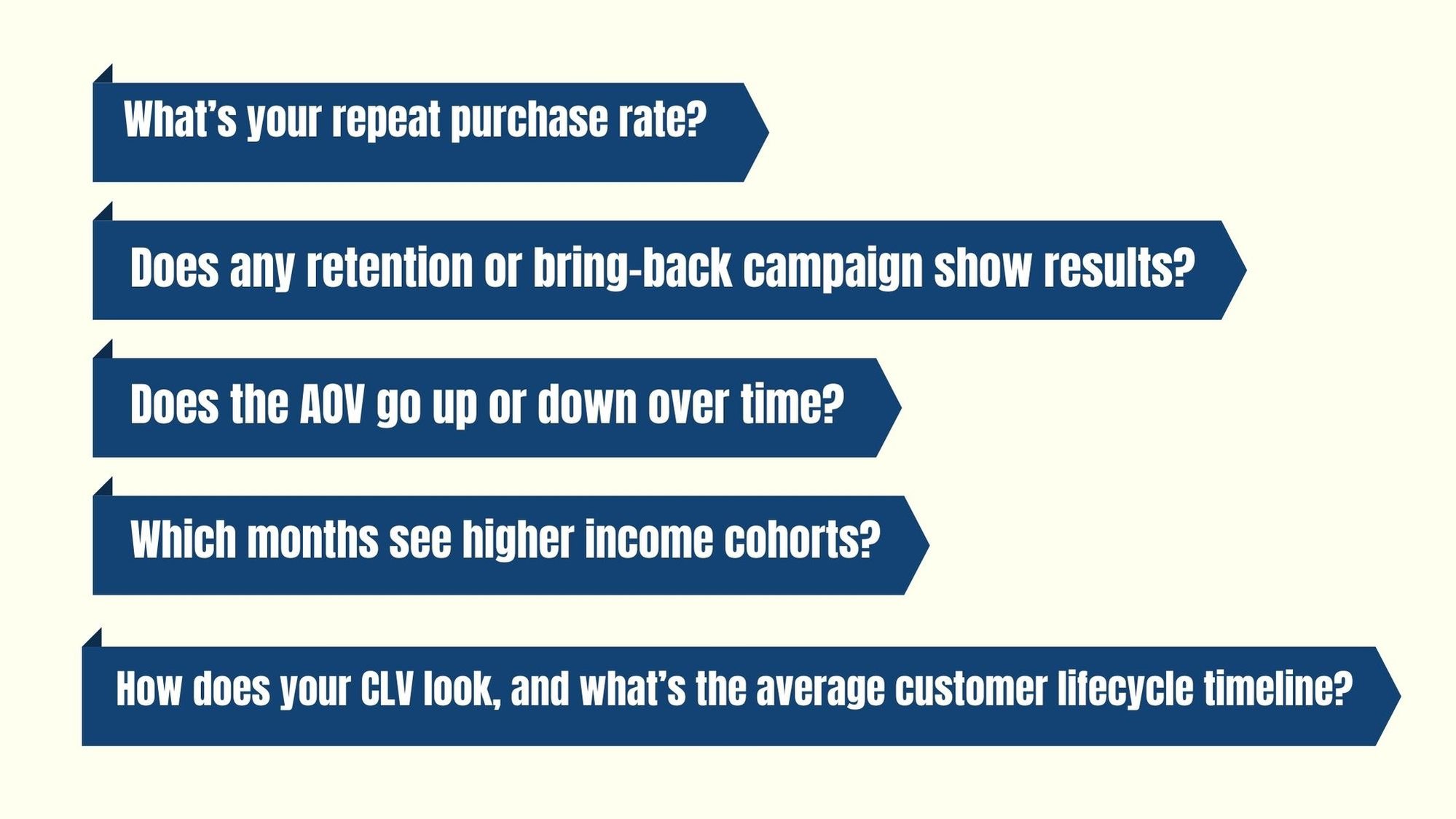
All these questions will help you fine-tune your retention strategy.
A lot of your first-time customers don’t return to your store due to irrelevancy. When a new customer places their first order, DTC brands should focus on devising post-sales campaigns that promote repeat visits and sales with every interaction.
This is where marketers should focus on personalizing and tailoring marketing campaigns according to the customer persona.
Here are ways to ensure that you can engage with your customers with a personalized approach continuously:
One of DTC brands’ issues is real-life customer experiences, especially if your brand offers commodities such as cosmetics, high-performance sportswear, timepieces, sunglasses, coffee or tea, and others.
In these cases, offline shopping is still preferred. However, there are clever ways to incorporate digital engagement mechanisms to provide your customers a virtual experience of your products.
Read also Online shopping vs Offline shopping - what's better?
Two of the best ways to do this is —
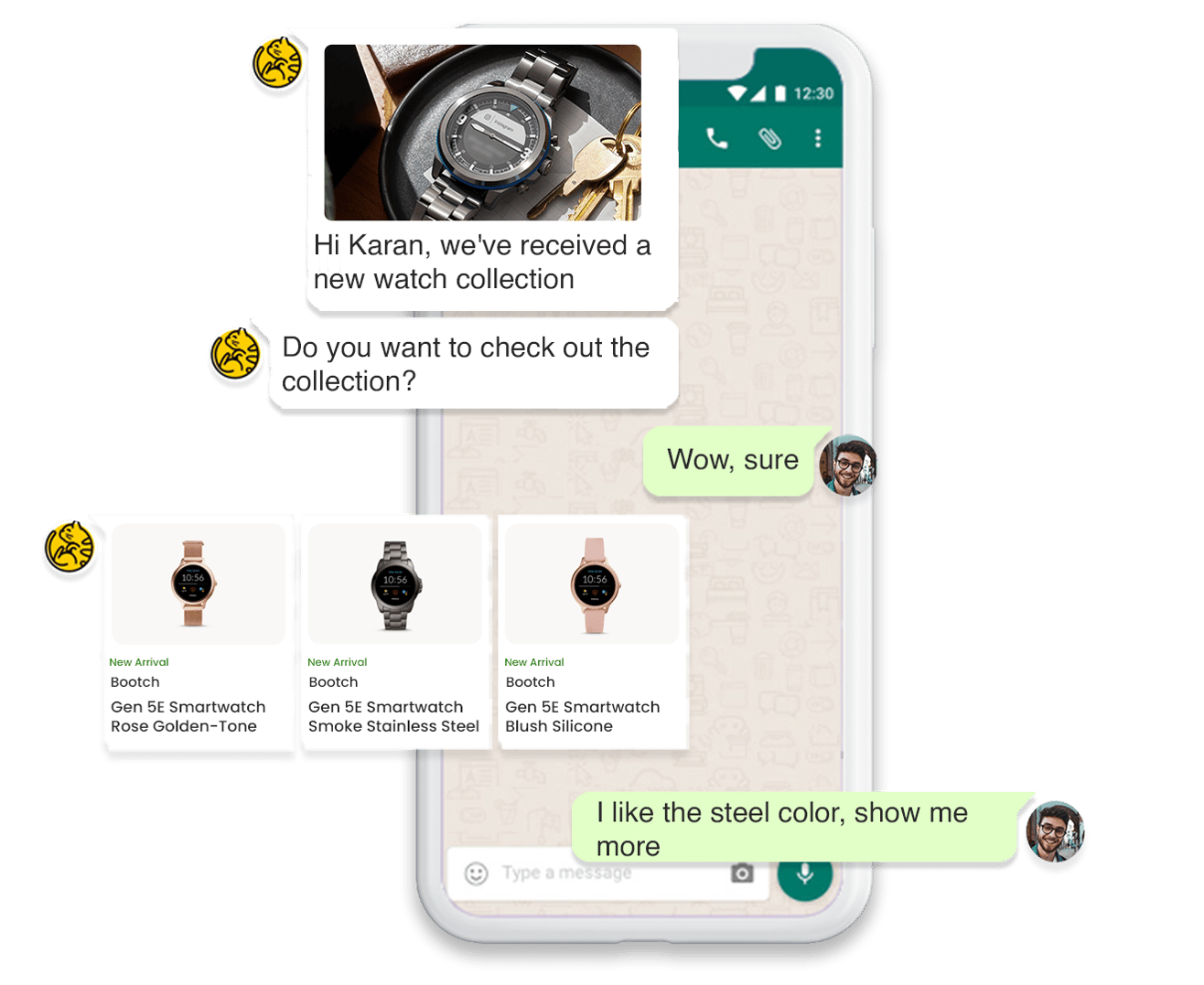
The other way to move your offline inventory and boost not only brick and mortar sales but online sales is by incorporating conversational commerce into your marketing strategy. Conversational commerce leverages the world’s most popular chat apps like WhatsApp, Messenger, WeChat, and others, to interact with your customers. As chat apps are one of the most popular app categories and are used at least 22 hours in a year, it also might be your effective channel to help customers shop directly via their favorite apps.
Read also Conversational Commerce: Use cases & Examples
If you are utilizing a marketing platform like Vizury, you can focus on nudging your customers to place repeat orders using omnichannel marketing.
Especially if you’re selling items perishable like fitness and sports supplements, coffee beans, food orders, and others, these items have a shelf life, and your customers will probably place fresh orders to restock. This is where being proactive can be advantageous for your DTC brand.
Create dedicated marketing campaigns that are triggered based on purchase history, especially for perishable items. For example, sending a 20-day reminder after selling a monthly bag of coffee beans can be a good way to remind customers that their coffee supply is exhausting soon.
As we said above in the 2nd point, you can’t just shoot any product to your customers and hope that they’ll buy.
Apart from leveraging customer behavior, historical and activity data. Marketers should also segment customers from the get-go to understand how much effort it would take to turn them into loyal customers and improve customer retention.
This is where customer segments come into play. If you are using a good marketing platform, it could help you identify various types of customers that come to your store.
For example:
These segments can narrow down your efforts and help you create specifically tailored marketing campaigns via channels like email, push, and others.
For example, Good Eggs sends these engaging emails to customers buying salad-specific items like organic veggies, dips, and dressing based on a previous order.
While double-downing in customer retention is extremely important, one can’t shy away from the fact that none of your marketing campaigns would be effective until you’re serious about testing them from day one.
By testing, you’re able to eliminate any 2nd thoughts or intuition-led strategy and create programs that are backed by data. Whether you are looking to improve repeat purchase rates with the help of a new email campaign or a new push marketing campaign. If you can a/b test these initiatives from the get-go, you’ll be able to understand which variant is more effective and resonates more with your customer base.
Also, introduce customer funnels into these tests to indicate the potential point of friction in your marketing initiatives. Funnels will help you see the drop-off points like emails not opened. If not, then why?
Or
Low CTR rate. This might mean the customer doesn’t find your content relevant or there is a design issue.
In its simplest form, a customer retention strategy is about making people enjoy shopping at your store. It’s about treating your customers well and making them feel valued.
These best practices for improving customer retention are going to help you get there. And if you already have a great plan but looking for a platform to help you fulfill your goals, try Vizury.
Learn what customer retention is, its metrics, and how businesses can create opportunities to improve customer retention and encourage repeat...
Learn everything you need to know about customer retention marketing. Build strong relationships that help you improve your retention rates
An effective customer retention strategy plays a crucial role in improving conversion rates. Learn why customer retention is so important for your...
Be the first to know about new B2B SaaS Marketing insights to build or refine your marketing function with the tools and knowledge of today’s industry.